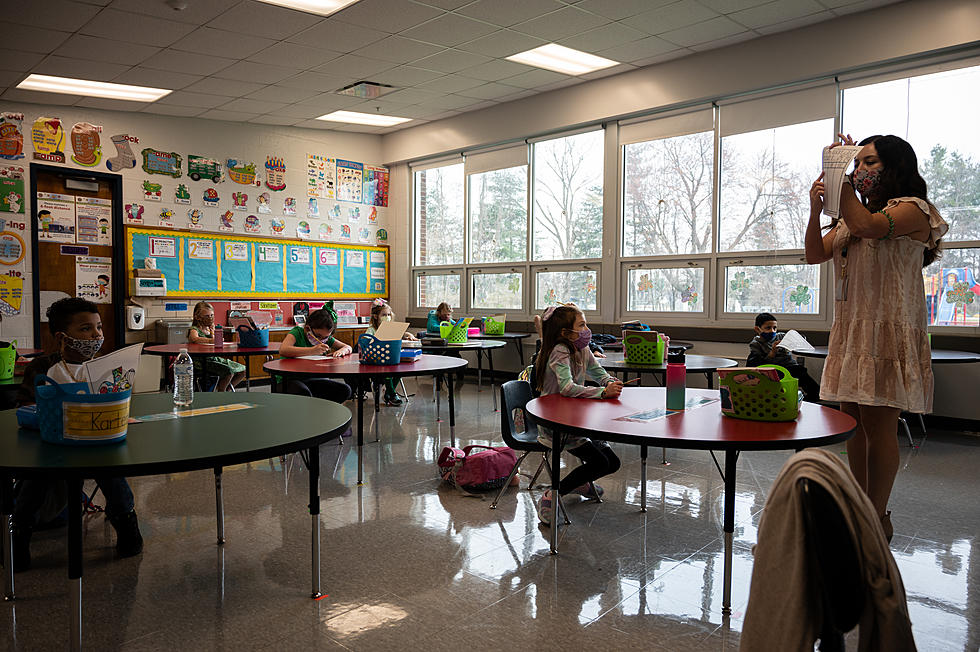
Transfer Students Grow Fast at University of Wyoming
LARAMIE, Wyo. (AP) — As the University of Wyoming seeks to boost its enrollment among all populations — including first-time, graduate, resident and non-resident students — one class of students stands out for the explosion it's experiencing and expected to keep experiencing.
More than 1,000 new transfer students — many coming from one of the state's seven community colleges — enrolled at UW for the fall 2017 semester, constituting a 12.3 percent increase from the fall before.
Mary Aguayo, UW director of transfer relations, detailed the various ways the university is starting or planning to handle this influx of students during the Board of Trustees' March meeting.
"This academic year, 45 percent of our new incoming students were transfer students, which is really exciting to see, especially considering the large growth that we had in the freshman class this year," Aguayo said. "It won't be long before transfers are half or more of our incoming students, so this is definitely not a segment of the population, this is a very large part of the population."
One major initiative is the recent establishment of a Transfer Success Center, which Aguayo oversees. From the center, transfer students are offered guidance and Aguayo — alongside a small team — works on further initiatives aimed at making the transition from community college to university smoother for transfer students.
"There are some challenges in working with transfer students, and a big part of the challenge is there is no one transfer student," she said. "They could be online, they could be in Casper, they could be here in Laramie.
"They could be all ages and have all ages of academic preparation."
While many transfer students, especially those who come to UW with 60 or more credits under their belts, are some of the university's highest achieving students, Aguayo said, a sizeable number struggle to adjust.
The Transfer Success Center is starting up a number of programs to combat this, including a transfer peer mentor team, transfer-specific scholarships and academic interventions — such as classes specifically designed for struggling transfer students.
"Right now, we have two classes on the books for transfer students on probation — 173 of those new students who started this fall are on academic probation because they had below a 2.0 (GPA) after their first semester," Aguayo said. "I personally called every single one of them and talked to them about their experience and encouraged them to register for these classes."
UW is also continuing to develop and adjust 2+2 plans with community colleges — agreements which help students do two years at a community college and then transfer to the university, graduating with an associate's and a bachelor's in four years.
In addition to boosting UW's four-year graduation rate the 2+2 agreements help ensure that credits earned at Wyoming community colleges translate to credits earned at UW, Aguayo said, adding that students who transfer with an associate's degree are often more successful at the university.
"We're 44th in the nation on transfer with award," she said. "That's something I'm really personally committed to increasing. We want to get those numbers up."
A new state law enacted by this year's Wyoming Legislature sets deadlines for the development of a common transcript and course numbering system between the state's public institutions of higher education.
UW must present a report to the Legislature by Oct. 31 and have a common transcript system developed by July 1, 2019.
"This will help get all of our work with community colleges even closer in alignment," Aguayo said.
For the students who do transfer to UW without an associate's, Aguayo said her team is working on a reverse transfer program, wherein transfer students are awarded associate's degrees from their original college after completing the requisite coursework at UW.
"We've identified 1,300 students who may be eligible for this and we're working with registrars and vice presidents for student services all around the state to get students the degrees they already qualify for," Aguayo said.
Using data from fall 2015, the Chronicle of Higher Education ranked UW fifth in its list of flagship institutions with the highest percentage of older undergraduates.
"We are serving a very large number of older and adult students and have very different needs than a traditional age students," Aguayo said.
More From KGAB









